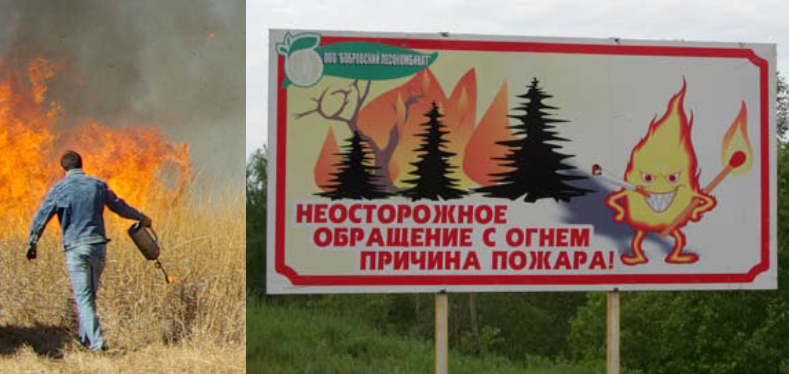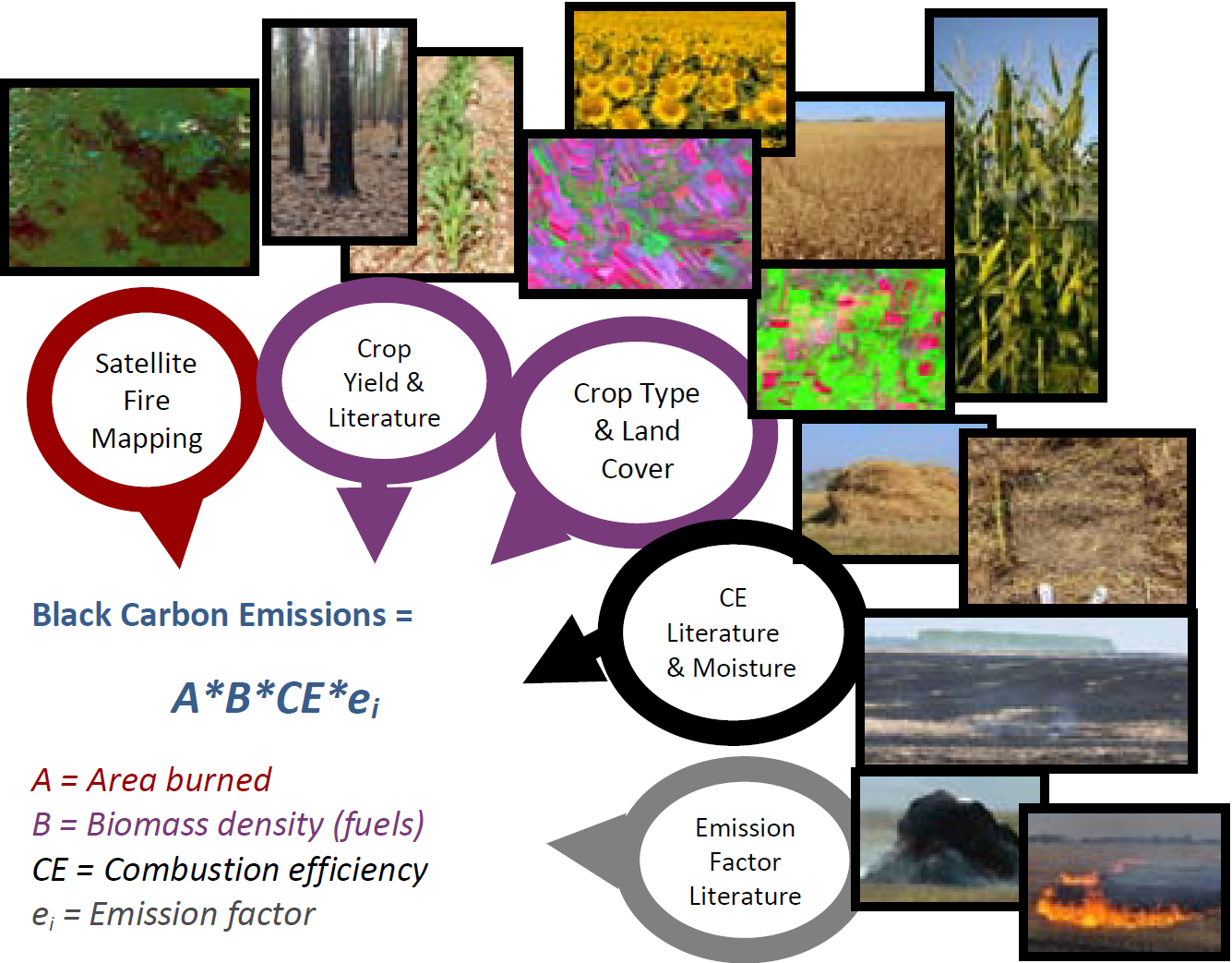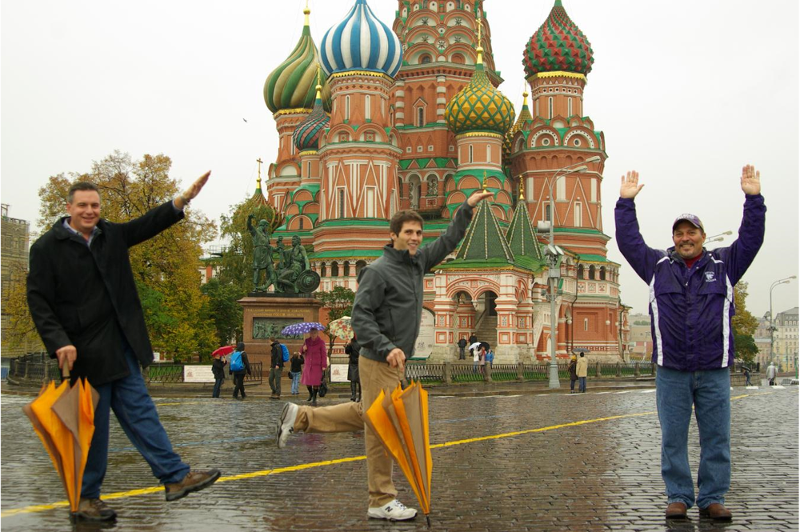Bilateral Partnership on Black Carbon in the Arctic

In 2012, sponsored by the U.S. Department of Agriculture, Foreign Agricultural Service, a team of extension specialists from Kansas State University has worked with Russian institutions to identify and promote feasible options for Russian farmers to reduce black carbon emissions from agricultural burning and their subsequent deposition in the Arctic. As part of larger activities, Dr. Aleksey Sheshukov has coordinated a two-month visit of two exchange scholars, Dr. Sofia Solovyova from Moscow State University, and Mr. Artem Solopov from Russian Engineering Academy of Management and Agribusiness (RIAMA). During the visit, the scholars learned about:
- the USA domestic policy towards agricultural grassland fires,
- black carbon researcher’s experience to figure out means of geographically localizing black carbon emissions,
- farmer’s educational processes and economical motivations,
- the designs and select options that can be offered to Russian farmers to avoid, mitigate, or reduce agricultural burning.
What is black carbon?

Black Carbon (BC) is the soot that arises from the incomplete combustion of biomass and fossil fuel. BC is known to be an agent of warming in the Arctic, where it darkens the surfaces of snow and ice and causes enhanced absorption of solar radiation, resulting in greater melting of Arctic sea ice and snow. In addition, BC aerosol particles can have a net warming effect in the Arctic by absorption of radiation in the atmosphere. This warming impact of human-source BC in the Arctic has recently become recognized as an important factor in global climate change. Arctic BC deposition from agricultural burning is a result of BC produced through the burning of crop residue after harvest and before planting, the burning of grassland or forest from escaped crop residue fires, and the transport by wind of BC emissions from the residue burning and the escaped fires. Burning of agricultural biomass in Russia, mainly through fires intentionally set to clear crop residue, is among the important sources of BC deposited in the Arctic.
Technical Outreach Workshop (March 28- 29, 2012. Pushkino, Russia)
USDA, Kansas State University and RIAMA convened a workshop of 70 participants – including Russian and American scientists, Russian government officials, agribusiness representatives and NGO representatives – to address the problem of BC deposition in the Arctic as a result of agricultural burning in Russia. The workshop included presentations and focused discussions, resulting in the identification of options to avoid, reduce, or mitigate agricultural burning that contributes to BC deposition in the Arctic. In this workshop, participants sought to better understand the amount of burning which takes place in Russia, when and where most of it occurs, and most importantly, what options would be most feasible for farmers to burn differently, burn less or not burn at all.
Farmer Outreach Workshop (October 9–10, 2012. Pushkino, Russia)
Kansas State University and the Russian Engineering Academy of Management and Agribusiness (RIAMA), with support from the USDA Foreign Agricultural Service (FAS), jointly-convened a farmer outreach workshop to explore farmers’ views of options for avoiding, reducing, or mitigating agricultural burning in Russia that results in BC deposition in the Arctic. The options discussed in this workshop were developed during the 2012 Black Carbon Technical Outreach workshop.
Potential future bilateral activities:
- Improve access to appropriate farm machinery (or ability to afford) for no-till/no-burn agriculture:
- Pilot project with a Russian farmers’ organization to demonstrate and promote the use of a modified planter, currently being used successfully in Russia for no-till planting. These demonstrations possibly could be conducted in southern Russia on the no-till farmer’s land, with other participants brought in to observe, or perhaps the no-till farmer could visit other regions to establish models.
- Pilot project with a Russian farmers’ organization to introduce through community sharing/management or private sector management/renting of the appropriate farm machinery for no-till planting in areas where crop residue is burned and there is a high risk of fires escaping into nearby grasslands or forest land.
- Improve Russian farmer access to information on alternatives to burning: RIAMA has expressed interest in study visits by groups of Russian farmers to the U.S. to gain a better understanding of U.S. extension, especially as it relates to alternatives to agricultural burning. This would include agricultural extension materials on no-till agriculture, such as the introduction of crop rotation as a means to reduce the occurrence of pests or weeds that could damage the main crop (usually wheat). Perhaps some of the farmers who attended the Farmer Outreach Workshop could be recruited to be leading participants in these technical study visits to the U.S.
- Investigate the impact of burning method on BC emissions production and transport: The method of burning (pile burning versus slow, smoldering burning across field) may have an effect on BC emissions production and transport to the Arctic. USDA could implement a pilot project in the United States aimed at identifying which method of burning lowers the production, the smoke lofting, and the possible transport of BC.
- Investigate the impact of burn timing on BC emissions transport: The timing of agricultural burning is an important variable in BC transport to the Arctic. USDA could potentially use the Arctic BC transport potential map developed during the USDA Black Carbon program to identify high risk Arctic transport regions and, subsequently, work with local partners to implement a pilot program aimed at modifying the timing of agricultural burning to time periods when transport potential of BC to the Arctic is low.
- Improve understanding of the potential business viability of alternative uses for residue: A pilot project to explore the feasibility, local demand, and local use of wheat straw production could provide an opportunity to identify an effective alternative to agricultural burning. One such pilot could be an investigation of the potential for collecting and converting the excess residue to biochar and then using it as a soil amendment, or using straw in construction material or fuel pellets. This might require a government or donor-provided subsidy or incentive to residueprocessing companies as well as additional infrastructure in rural areas.
